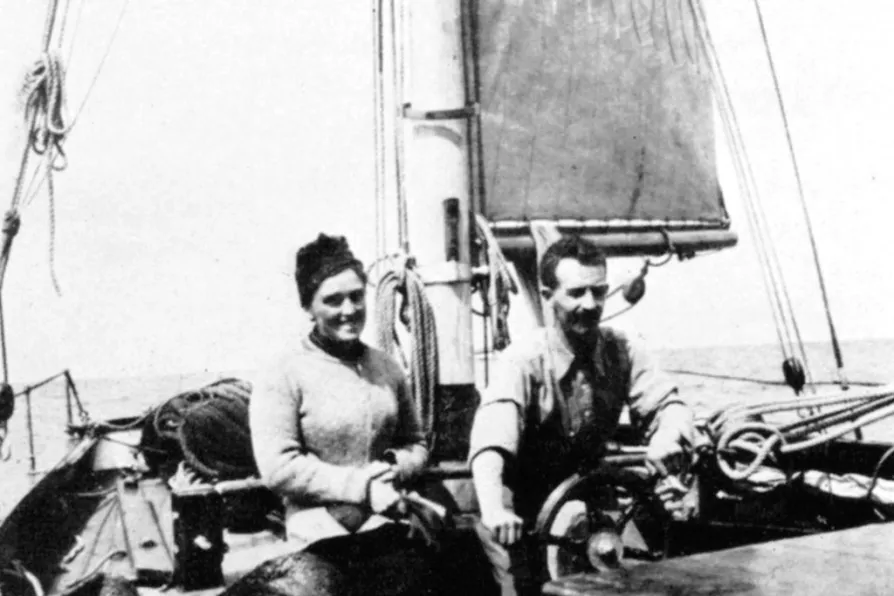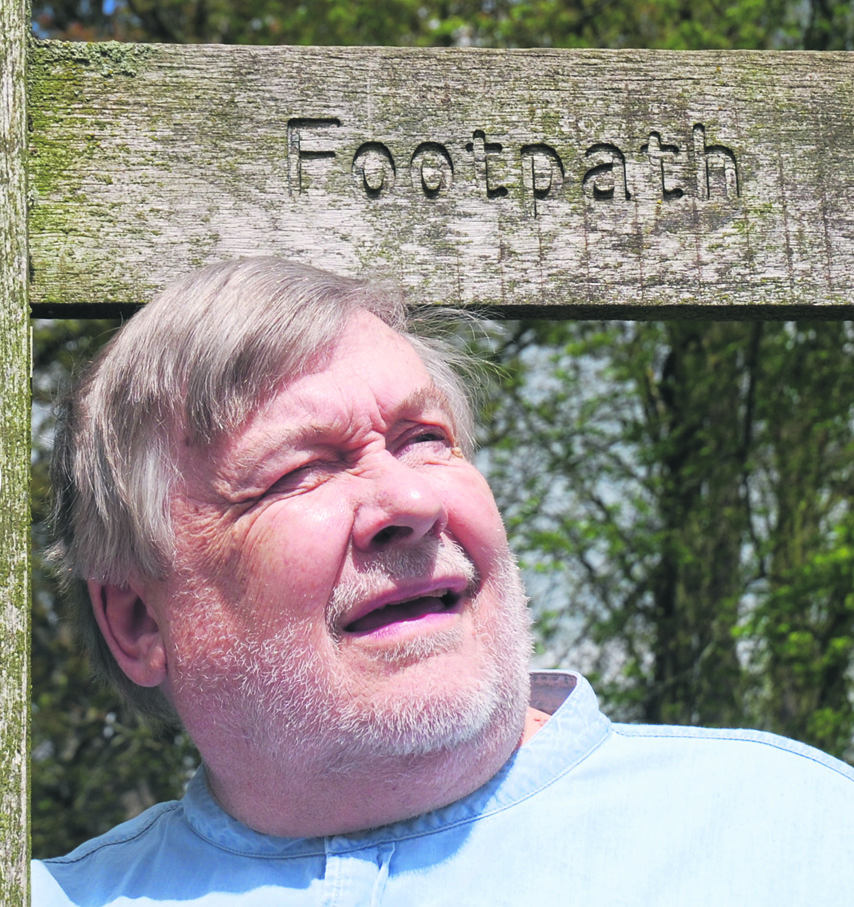Durham Miners’ Association general secretary ALAN MARDGHUM speaks to Ben Chacko ahead of Gala Day 2025

 Erskine Childers, with his wife Molly, on a Baltic cruise in their yacht Asgard in 1910
Erskine Childers, with his wife Molly, on a Baltic cruise in their yacht Asgard in 1910
IN THE summer of 1979, 40 years ago, I went to see a just-released film, The Riddle of the Sands. I had been waiting for the film of one of my favourite books for a very long time.
The 1903 novel by Erskine Childers, like the film, is set in the misty chain of Frisian Islands that run along the North Sea coasts of Holland, Germany and Denmark.
Over the years I have been able to explore some of those islands and what an amazing landscape they are.
I loved the book and the film but even more interesting is the key role in the tumultuous fight for independence by the Irish people against British imperialism that the author played.
The plot of the book concerns two English friends, Carruthers, a minor Foreign Office official, and Davies, a keen sailor. The two take a summer voyage across the North Sea to the Frisian Islands. Cruising the islands they realise Germany is preparing a fleet of barges to invade England’s biggest bay — the Wash.
Add in a British spy working for the Kaiser, a romantic interest and a sunken treasure ship and you get a story that in print, or on screen, has impressed most of our current crop of spy fiction authors.
The author said it was written as “a story with a purpose” written from “a patriot’s natural sense of duty,” which predicted war with Germany and called for British preparedness.
If the Riddle of the Sands is a great adventure story then the real life of the author simply knocks spots off it.
Although Erskine Childers was born in London he came from a family from County Wicklow in Ireland. When both his parents died before he was 12 he went to live in Ireland.
He returned to England and Trinity College Cambridge to study law but would never lose his love of Ireland. In debates at Cambridge he spoke against Irish Home Rule but that would change. His ambition was to become a British MP. Having gained his degree in law early in 1895 he became a junior committee clerk at Westminster.
A hill-walking injury meant that the one sport he could participate in was sailing. It would become a lifelong love. In 1893 he learned to sail in his “scrubby little yacht” Shulah.
Bigger and better boats followed allowing longer, more adventurous voyages and by 1897 he was sailing his 30-foot cutter Vixen as far as the Frisian Islands.
In January 1901 Childers started work on The Riddle of the Sands, the book that would make him both rich and famous.
In 1903 on a motorcycle tour of US New England he broke down, borrowed a spanner and met his wife to be. Mary (“Molly”) Alden Osgood was a firm republican and a well-read heiress. The couple married in 1904.
They returned to London where he resumed his position in the House of Commons. His reputation as author gave the couple access to the political establishment. Molly started to convince Childers out of his already weakening love of British imperialism.
Over the next seven years they lived comfortably in Chelsea on Childers’s parliamentary salary, extra income from his writings and from Molly’s wealthy father. They had three sons.
Molly took enthusiastically to sailing. In 1903 — the year he published his best-selling book — Childers and his new wife cruised to Friesland in Molly’s father’s wedding present, a 28-ton yacht named Asgard.
Molly convinced Childers that Ireland must be united and have home rule. His motor tour of poverty-stricken Ireland in 1908 further convinced him.
In the autumn of 1910 Childers resigned his Westminster post to join the Liberal Party which backed Home Rule. In May 1912 he became the parliamentary candidate for Davenport. The support for an expanded navy suggested by his novel made him favourite for the next election.
As a prospective Liberal candidate Childers wrote his last major book, The Framework for Home Rule, in 1911. Childers consulted Ulster Unionists in preparing the book and wrote that their reluctance to accept a united Ireland would easily be overcome.
When Ulster Unionists started to talk of civil war the Liberals began to entertain the idea of a divided Ireland. A disgusted Childers left the Liberals.
The Liberals’ Home Rule Bill was introduced in 1912, and although passed was shelved for the duration of the war.
By July 26 1914 — just days before Britain and Germany went to war — Childers was convinced enough by the Irish Republican cause to use his yacht Asgard to land 1,500 German Mauser rifles for the Irish Volunteers at Howth close to Dublin. The Asgard had collected the rifles from a tugboat that had carried them from Hamburg and met Childers near the Belgian coast.
Constance Markievicz supervised a group of leading republicans with hand carts and wheel barrows to land almost all the rifles safely. Young members of Markievicz’s Fianna youth movement delivered them to safe houses.
The unloading attracted a crowd, and police and soldiers were ordered from their barracks. Some police refused to move and supportive civilians threw stones and insults at the troops.
The soldiers shot into the civilian crowd and bayoneted one man, resulting in the deaths of four civilians and wounding of nearly forty. It became known as the Bachelor’s Walk massacre.
But now World War I had arrived and Childers turned to defeating the Germans. He fought on land, sea and air, flying seaplanes over familiar Friesland and bombing the Cuxhaven airship base and winning a Distinguished Service Cross in Galipoli.
In July 1917 he went to Dublin as part of prime minister Lloyd George’s unsuccessful Anglo-Irish Home Rule initiative. Childers was totally dismayed by the violent suppression of the 1916 Easter Rising.
In March 1919, after a severe attack of influenza, he convalesced in Ireland where he met Michael Collins and Eamon de Valera. They convinced him that Ireland as a dominion would not work.
A month later he met the Sinn Fein leadership in Dublin. His reception was mixed. Some were hostile thinking him a renegade, a traitor to Britain, or even a British spy.
He and Molly rented a house in Dublin in 1919 when Childers was made director of publicity for the first Irish Parliament. In 1921 he was elected to the Dail.
Childers was secretary-general of the Irish delegation that negotiated the Anglo Irish Treaty with the British. He totally opposed the requirement that Irish leaders take the oath of allegiance to the king.
The treaty divided Sinn Fein and the IRA and civil war broke out in June 1922. During the civil war, Childers produced propaganda for the anti-treaty side. He was unpopular with some of the anti-treaty group who called him “that bloody Englishman.” The high command of the anti-treaty forces distanced themselves from Childers too on the grounds that he was too infamous.
On November 10, Free State forces arrested and tried Childers for possessing a small pistol. The gun had been a gift from Michael Collins. Childers was sentenced to death. Without waiting for the appeal results, he was shot on November 24 1922.
Childers’ body was buried at Beggars Bush Barracks until 1923, when it was exhumed and reburied in the republican plot at Glasnevin Cemetry, Dublin.
Eamon de Valera said of him: “He died the prince he was. Of all the men I ever met, I would say he was the noblest.”
His wife Molly declared that her husband’s works should be locked away until 50 years after his death. Hence the delay on bringing Riddle of the Sands to the cinema screen.
The Riddle of the Sands has never been out of print in 116 years. Ken Follett described it as “the first modern thriller.” The Guardian put it in its ten best spy novels, The Observer in the 100 greatest novels of all time.
It is a great story, but nowhere near as great as that of Erskine Childers, the man who wrote it.



















